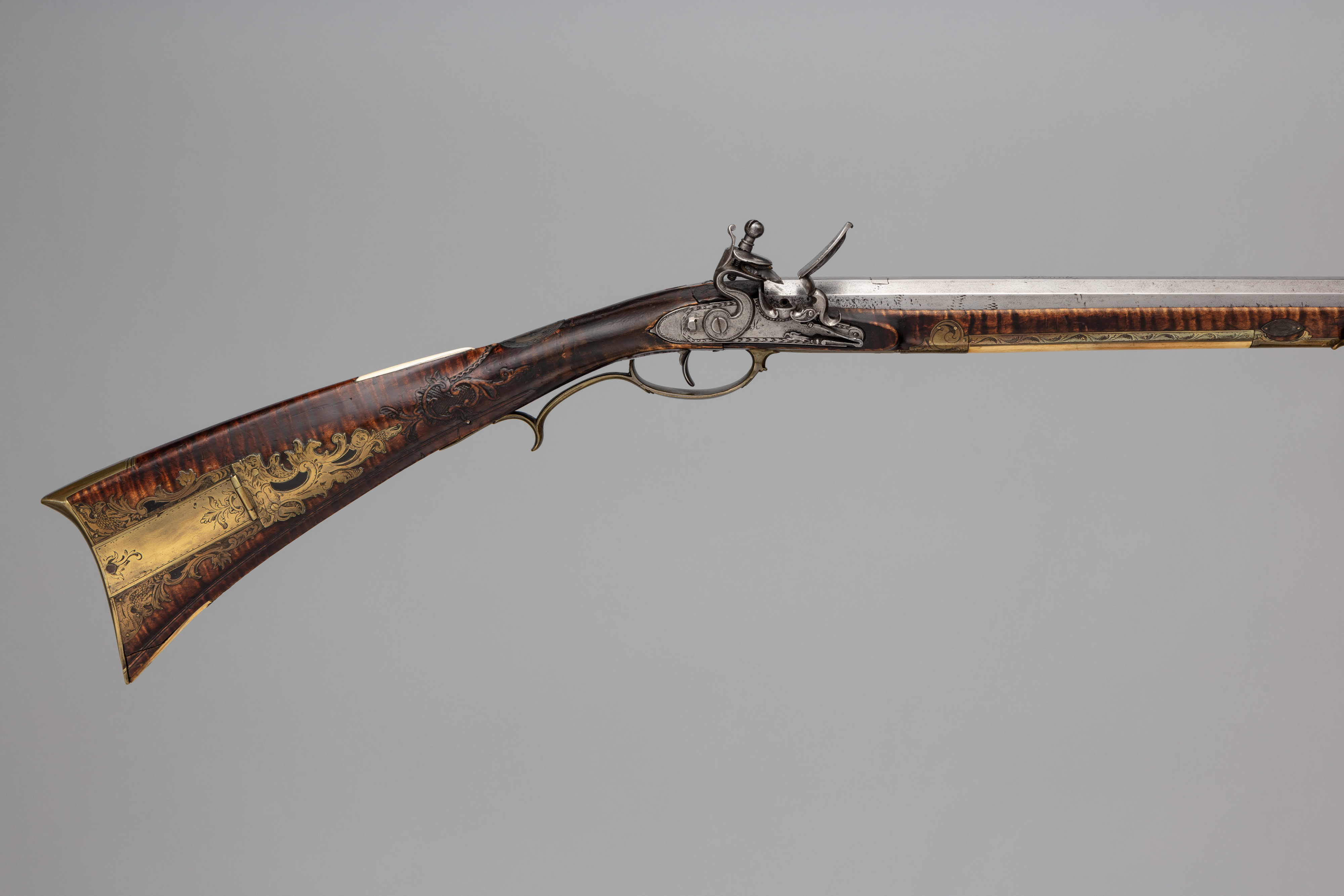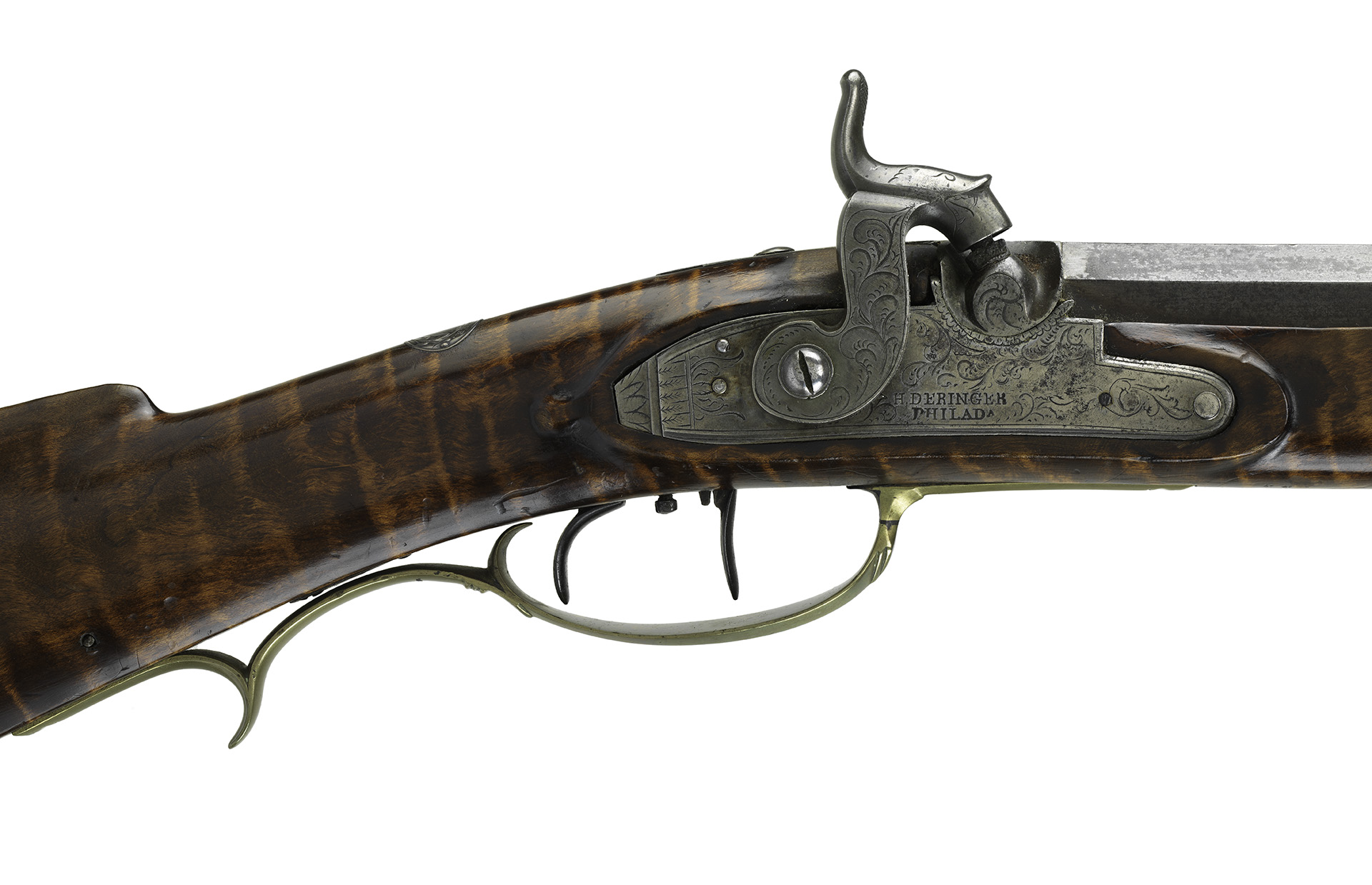Regarding local gunmakers seeing something and copying it- this has never been documented. Dickert saw a lot of guns. So did Oerter, JP Beck, J&S Hawken, Dimick, etc. We don’t see J&S Hawken rifles with English buttplates. We don’t see JP Beck rifles with stepped wrists or Roman noses. Makers did not copy something they saw. Can’t find one example.
Whoa there hoss!! You been drinking espresso this morning? Better switch to the caffeine-free coffee. LOL
You don't see the "English sporting rifle" that Jacob Kunz copied into this rifle?
Or how about the other "English sporting rifle" that J. Joseph Henry copied into this rifle?
Both Henry and Kunz made rifles in the style of the Philadelphia School. The identifying characteristic of the Philadelphia School is the pineapple finial as seen on the trigger guard of the JJ Henry marked rifle above.
The Philadelphia gun makers copied the pineapple finial directly from the English.
You mention Dickert, Oerter, and Beck. I'll throw Andreas Albrecht in there, too. We know of no direct connection between Dickert and Albrecht or Oerter, but we see a lot of characteristics in Dickert's carving that appear on Albrecht attributed rifles as well as the one surviving signed rifle. Somebody surely was copying somebody there.
Isn't the existence of identifiable "schools" evidence that gun makers in that school were "copying" each other? I don't know who first used the "daisy" patch box, but it sure looks like a lot of gun makers copied it on their rifles.
Isn't there also evidence of a gun maker who was trained and worked in one area or school that moved to another area and adopted or copied characteristics of that school in his rifles?
Jacob Kunz may be a good example of this having lived and worked in the Lehigh Valley area of eastern Pennsylvania before he moved to Philadelphia in 1810. This is the Kunz rifle in the Metropolitan Museum in New York which is very much in the Lehigh Valley school and different than his later Philadelphia school rifles or the half stock flintlock pictured above.
You say, "We don’t see J&S Hawken rifles with English buttplates." But don't we see J&S Hawken rifles with English scroll trigger guards?
Hanson went through
Missouri Republican newspapers from 1823 to 1840 to "glean any real idea of the nature and extent of the goods offered by the many merchants of St. Louis." Here is a scan of a page from his book showing some of the ads he found. There are lots of references to English, French, and even German guns in the ads. Note the April 9, 1833 ad for Leverett & Thomas of New York that offered English guns varying from $4 to $100. A NW trade gun cost AFC about $4, but it's hard to imagine what a $100 (in 1833 dollars) gun looked like. Another interesting ad is the one for Bentzen & Kloppenburg on Nov. 14, 1834 that lists English, French, and German double and single barrel guns and rifles.
Maybe we're talking semantics here. You may find "copied" too strong a word. "Incorporated in" or "influenced by" may be more acceptable to you.
There is ample evidence that English sporting guns and rifles were imported into the US and found their way to St. Louis where the Hawken brothers would have been exposed to them. I think they also had indirect English exposure from guns and gun parts made in Philiadelphia and marketed in St. Louis. Tryon was a major wholesaler of gun parts. The patch boxes on the Medina Hawken and the Leonard Hawken, for example, are like commercial patch boxes that Tryon marketed.
The style of breech bolster on this Henry Deringer rifle made in 1829 is very similar to some we see on J&S Hawken rifles and was probably copied from English guns.













